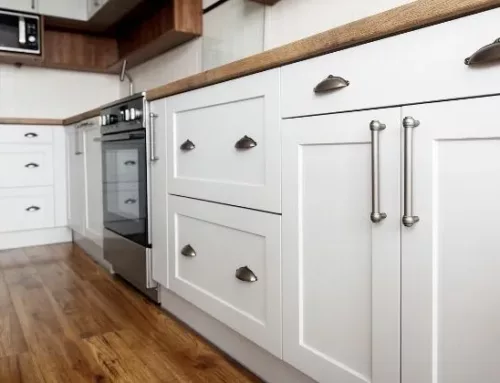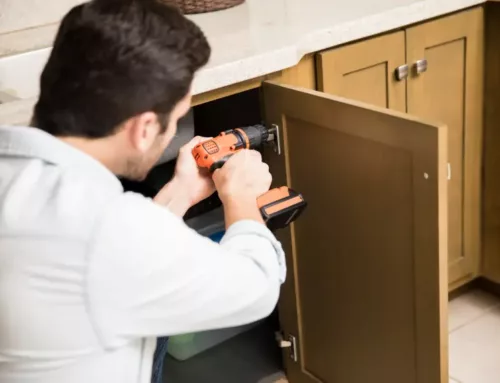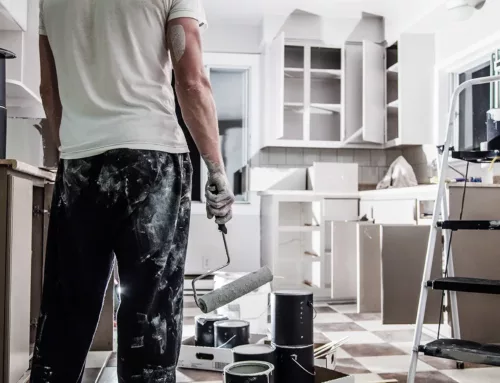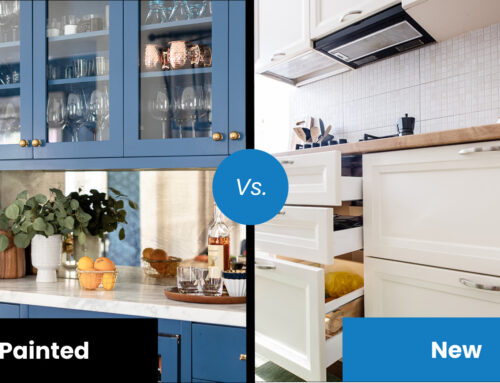Table Of Contents
How To Choose The Best Exterior Painting Colors For Your Home
- Consideration of Fixed Decorative Elements
- The Influence of Surroundings
- Keeping in Mind Neighborhood Aesthetics
- Diving into the Neutral Palette
- The Importance of Test Patches
- Understanding Color Durability and Lifespan
- Current Trends in Exterior Painting Colors
- Key Takeaways
Do You Need Your Home’s Exterior Painted And Live In The Portland Metro?
Resources

Choosing the right exterior painting colors for your home is a task that often comes with a mix of excitement and apprehension. We’ve all seen those charming houses nestled amidst trees, their colors perfectly harmonizing with the surroundings, and thought, “I want my home to look just like that!” The decision, though, can be quite overwhelming.
You may start by spending countless hours browsing through Pinterest boards, exploring home design websites, and even examining real houses during your daily commute. However, as you delve deeper, it becomes clear that choosing the perfect color is far more complex. Fixed elements of your home, the environment, neighborhood aesthetics, and even the durability of the paint color become essential considerations, adding layers of complexity to your decision.
Now, imagine you finally find the perfect combination after many store visits, numerous test patches, and several discussions with experts. Picture a rich navy blue for the body, creamy white trim, and a bold red front door. Visualize your house standing subtly yet beautifully amidst the landscape, turning heads without looking out of place. That’s the reward of the meticulous process – a beautiful exterior that brings your home to life.
Recognizing that this process can be a daunting journey for many homeowners, we have put together a short comprehensive guide of considerations. Let’s navigate the path of choosing the best exterior painting colors for your home, making the process less overwhelming and more enjoyable. If you choose to tackle this big task yourself, there are a couple of mistakes to avoid when painting your house that are true for both your exterior and interior.

Consideration of Fixed Decorative Elements
When you’re picking colors for the outside of your house, don’t forget about the fixed decorative elements like stone, bricks or other key features. Each stone has its own mix of colors and shades, which makes your home look interesting. So, it’s important to choose paint colors that go well with these natural colors.
In the realm of exterior painting, fixed decorative pieces like stone, brick, windows, and accent materials deserve careful consideration. Stone, in particular, possesses distinct colors within it, making it crucial to select a paint color that aligns with these hues. When you make sure everything goes well together, it creates a beautiful outside look for your home. By blending the colors in a nice way, you can show off the natural beauty of the stone accents on your house. This makes everything look like it fits together and makes it really pleasing to the eye.
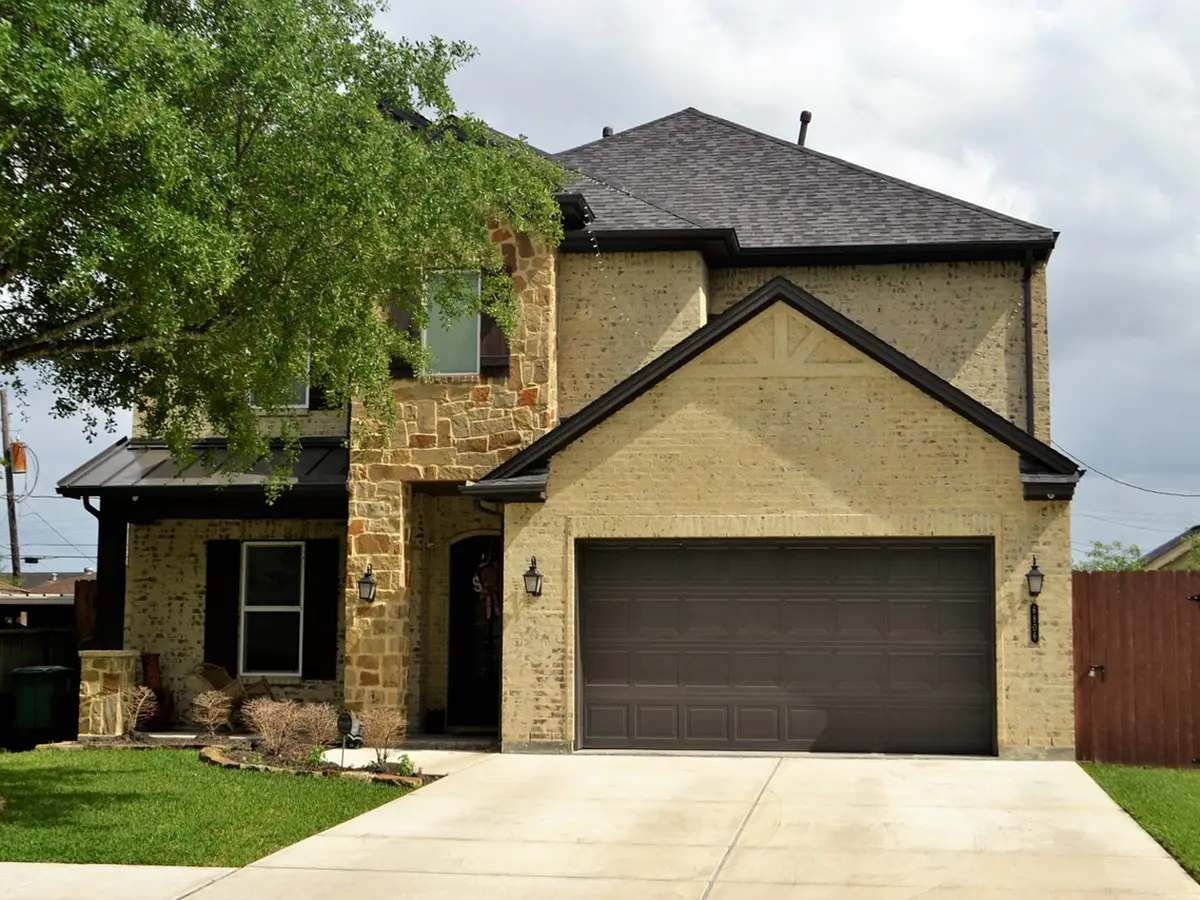
Whether you opt for complementary paint colors or the unconventional choice of painting the stone itself, consulting a professional painting contractor, such as ourselves at JK Paint & Contracting, will provide guidance and expertise to help you make the best decision for your home.
When stones have different colors, it’s a good idea to choose colors that go well with them. Neutral tones like warm beiges, light grays, or earthy browns can make everything look balanced and natural. These colors create a nice background that lets the stone stand out and be the main focus. For windows and other accent materials, you can pick colors that go along with or stand out from the surroundings. Soft blues or greens can add a nice touch, but you can also go for bold colors like deep reds or dark grays for a striking look. The most important thing is to choose colors that enhance the beauty of each decorative piece and make everything look great together.
The Influence of Surroundings
As a seasoned painting contractor company, we understand the significance of considering your home’s natural surroundings when selecting exterior paint colors. The environment plays a crucial role in guiding your color choices, and elements such as trees can greatly influence the overall aesthetic.
First, take a look at the trees and plants near your home. The colors you see in their leaves can give you great ideas for picking colors (Schweyer) that go well together. If you have lots of green trees around, you might want to go for earthy tones like olive green or brown to match the natural surroundings. But if your home is in a more open area, you could choose colors that stand out, like cool blues or warm oranges, to make your house really catch people’s attention.
Next, think about whether you want your home to blend in with the surroundings or stand out. Blending in means using colors that match the natural environment, which creates a sense of harmony and makes everything look like it belongs together. On the other hand, standing out means using colors that are different from what’s around your home, making it stand out and look unique.
Keeping in Mind Neighborhood Aesthetics
When you’re picking out a new color to paint your house, it’s important to look at the colors of the houses around you. Imagine your neighborhood as one big picture. Your house is just one piece of that picture, and it helps to fit in nicely.

Let’s say most of the houses in your neighborhood are painted with calm and quiet colors. If you decided to paint your house a super bright color (Kassam) like lemon yellow, it could stick out a lot. And not necessarily in a good way. It would be like wearing neon clothes to a formal party – you might get noticed, but probably not for the right reasons.
So, while it’s cool to show off your own style, it’s also good to think about how your house fits into the whole neighborhood. You can pick a color that’s different but still looks good next to the other houses. That way, your house can stand out without looking out of place.
Diving into the Neutral Palette
So, you’re getting ready to paint the outside of your house and you might be wondering, “Why do folks often go with neutral colors?” It’s simple. Neutral colors, like whites, grays, and beiges, are like those comfortable old sneakers you can wear with anything. They’re always in style and they work well with just about everything around them—your yard, the neighbor’s house, even the blue sky above.
Now, just because we’re starting with a neutral base (O’Shea) doesn’t mean everything has to be boring. Think of your house like a big canvas and you’re the artist. You want the big areas, like your walls, in calm, neutral colors so that the cool parts of your house—like the trim around your windows or your front door—can really stand out.
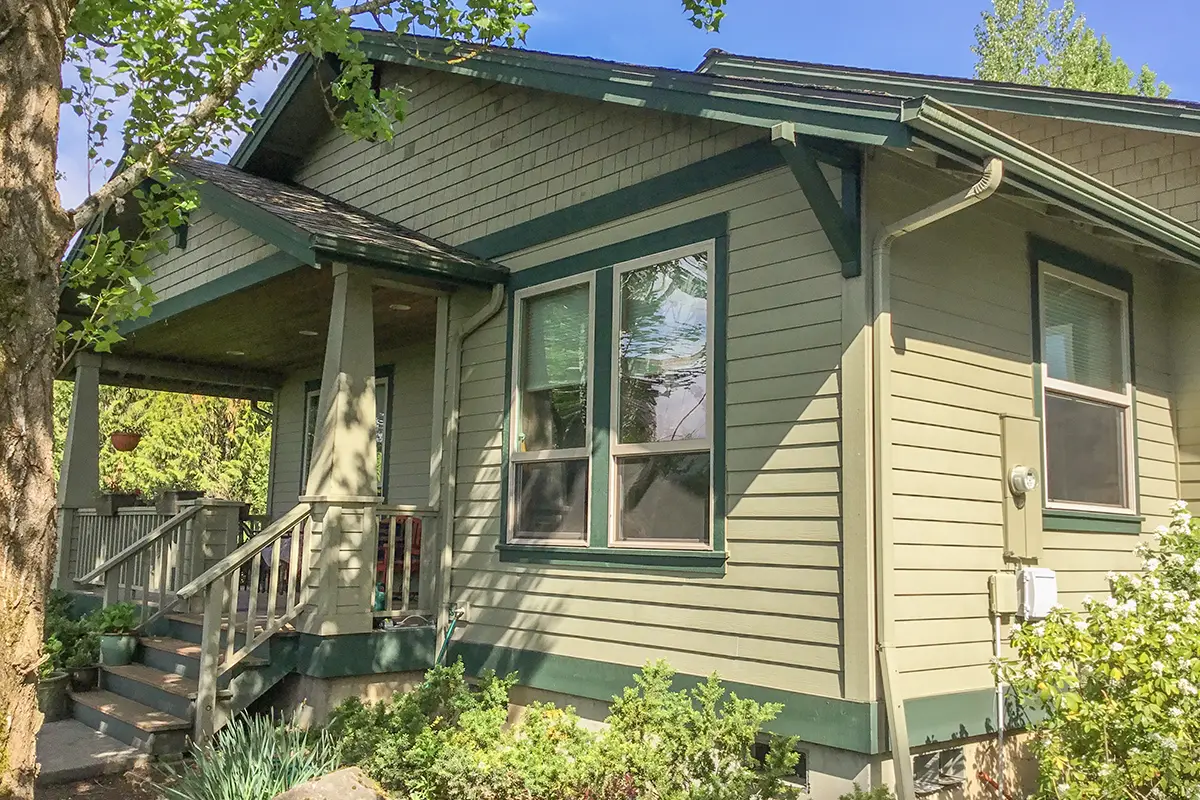
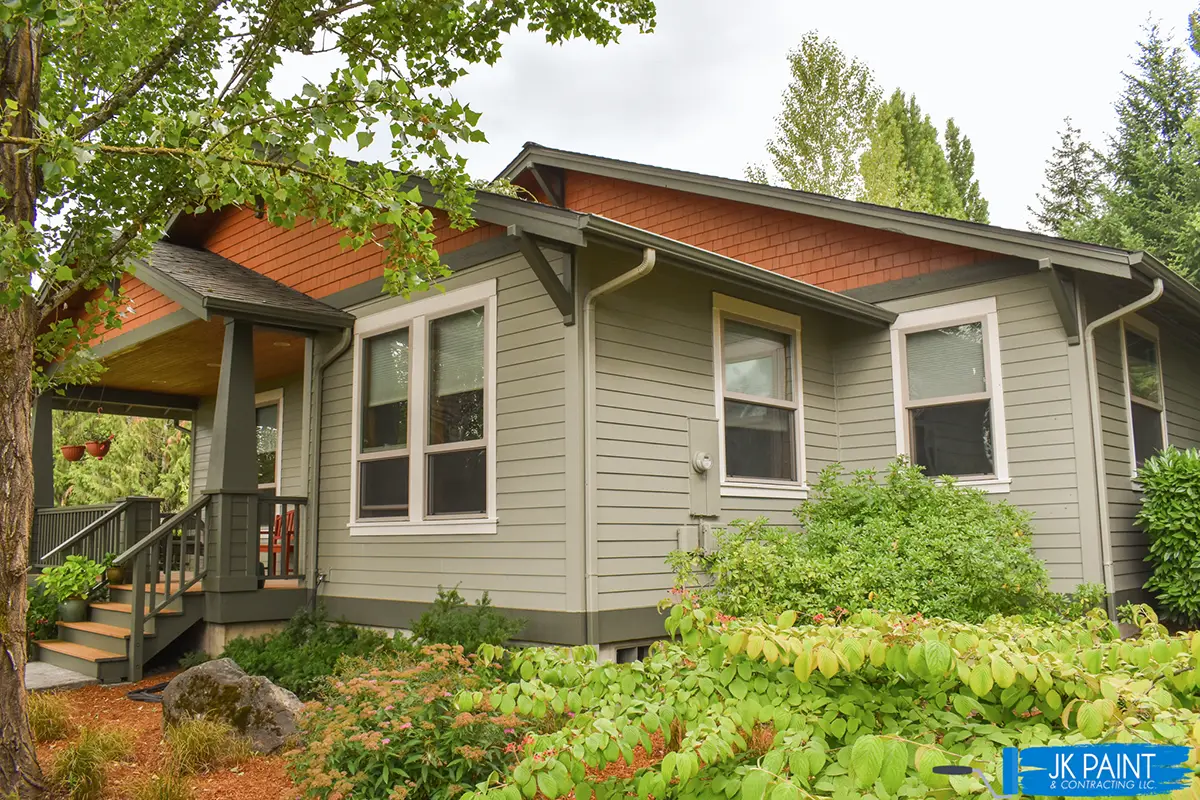
And that’s where you can get creative. Want to paint your front door a bright red or a cool blue? Go for it! Or maybe choose a different color for the window frames or the garage door. These are smaller parts, so even if you pick a bright or dark color, it won’t be too much. Just remember, these pops of color should still look good with your main neutral color. It’s all about balance. With the right combo, your house can be the coolest on the block.
The Importance of Test Patches
Something you’ve got to know about painting is that test patches (Crowder Painting) are your best friend. Why, you ask? Imagine you’re about to buy a new car. You wouldn’t buy the car without taking it for a test drive first, right? You’d want to see how it feels, how it handles, if it’s comfortable and if it fits your needs. Same idea with painting your house. You wouldn’t want to commit to painting the entire exterior without trying out the color first. This way, you get a feel for how it looks on a larger scale, under different lighting conditions, and alongside the other features of your house. It’s all about making sure it’s a good fit before making the full commitment.
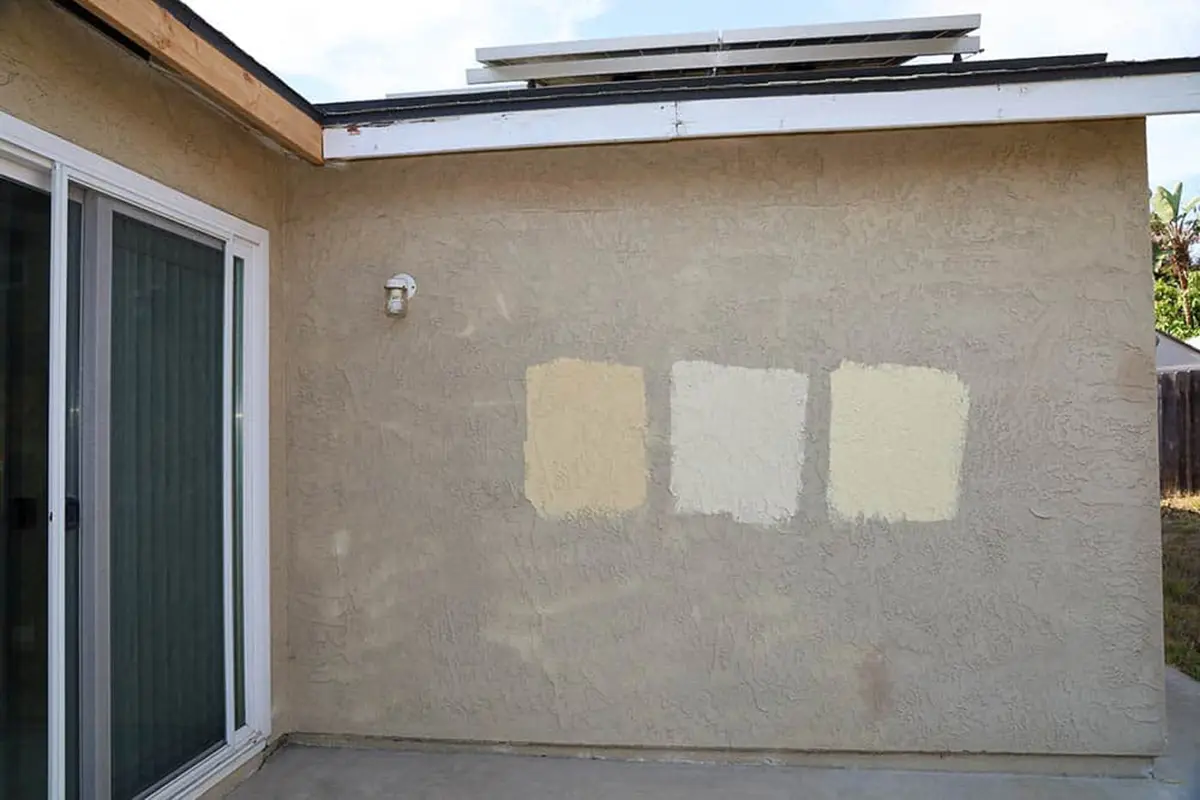
Test patches are just small squares of paint you put on your house to see how the color looks in real life. The color can look very different on a small paint chip in the store compared to a big wall on your house. Plus, light can change how a color looks throughout the day. The shade you love in the morning might not look so great by sunset.
Here’s how you do a test patch: go to the paint store and buy a small amount of the color you like. Paint a square that’s about two feet by two feet on your house. Then, check it out at different times of the day and in different kinds of weather. If you still love it after a few days, congrats! You’ve found your color. If not, try again with a different shade. Sure, it might take a bit of time, but it’s better than ending up with a color you don’t like on your whole house.
Understanding Color Durability and Lifespan
When it comes to painting, you have to think about something more than just the color you like. You have to consider how that color is going to last over time. Picture this: the sun is like a super-strong spotlight. Just like it can tan your skin if you’re out in it too long, it can also fade the paint on your house. This is especially true for really dark or super bright colors.
Think about a patio umbrella that’s been left outside through a sunny summer. You’ll notice, as the days go by, its vibrant color starts to lose its intensity. It becomes a bit more faded, a bit less eye-catching, right? This is very similar to what can happen to the paint on your house if you opt for a color that’s particularly susceptible to sun damage. The continuous exposure to the sun can make its original vibrancy wane over time, affecting the overall appearance of your home. This is also true for harsh weather elements that can have a negative effect on your home’s paint.
Lighter colors like whites or soft pastels have an interesting advantage – they’re a bit more resilient to the sun’s rays. It’s akin to wearing a light-colored shirt on a hot day – it doesn’t absorb heat as much as a darker one would. Lighter colors can resist the sun’s effects almost twice as long as a darker or brighter hue before they start showing signs of fading. So, if you want your house’s paint job to maintain its appeal for a longer period, a lighter shade could be your go-to choice. It’s crucial to remember that choosing the right color is not just about personal preference, but it’s also about how well it will hold up in the coming years.
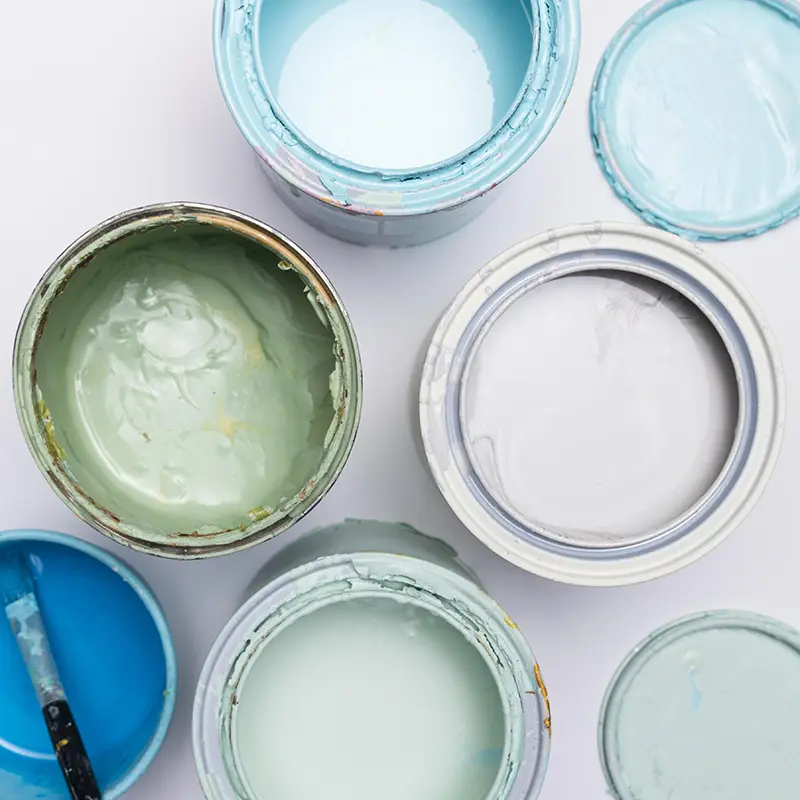
Current Trends in Exterior Painting Colors
Let’s have a look at the current trends in exterior painting colors. These days, the main body of the house, the large areas, are often being painted white. This provides a clean, fresh look. To add contrast and depth, dark colors like gray or black are being used for accents – think window frames, rooflines, and other smaller architectural details.
And the front door? That’s where some creativity is coming in. Many homeowners are choosing to paint their front doors bright, eye-catching colors like red, blue, or even green. It’s a chance to make a personal statement.
Of course, it’s important to stay true to your personal style. These trends are just that – trends. They give you an idea of what’s popular, but the key is to adapt them to your own preferences. Maybe you opt for an off-white or a less traditional accent color. Or perhaps your front door color is more subdued but still a color you love. And remember, durability is a significant factor to consider. Opting for too dark or too vibrant a color could mean more maintenance in the long run. By striking a balance between the trends, your personal taste, and the practicality, you can achieve an exterior paint job that’s both stylish and uniquely yours.
Key Takeaways
To sum it up, picking the perfect exterior paint colors for your home is all about thinking about different things and the benefits. You need to look at the fixed decorative parts, like stones, and make sure the colors go well with them. It’s also important to consider the surroundings, like trees and other houses, to decide if you want to blend in or stand out. You should think about how durable the colors will be and if they will last a long time. And most importantly, choose colors that you really like and that show off the beauty of your home. By trying out paint samples, considering the surroundings, and thinking about durability, you can make smart choices and make your home look amazing. So go ahead and get creative, whether you just want a new and refreshing look or you want to paint your home before selling it to increase its value. Let your home’s exterior reflect your unique style!
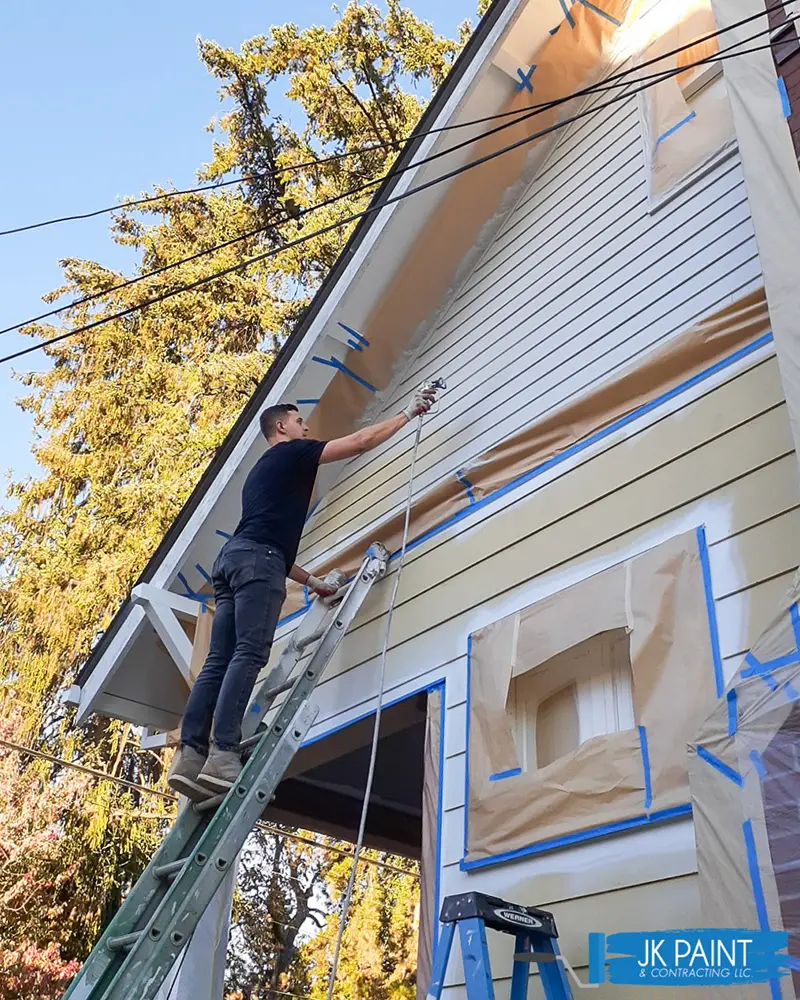
Do You Need Your Home’s Exterior Painted And Live In The Portland Metro?
When it comes to transforming your home’s exterior, our skilled professionals make the process effortless for you. We handle projects of all sizes, providing meticulous preparation, prime surfaces, and utilizing top-quality materials for a long-lasting finish. With our attention to detail and commitment to delivering exceptional results, you can trust us to enhance your home’s curb appeal and protect it from the elements.
At JK Paint & Contracting, we prioritize customer satisfaction. From the initial consultation to the final coat of paint, we guide you through every step, ensuring a seamless experience. Our extensive experience and professionalism have earned us the trust of numerous homeowners in the Portland Metro area. Let us bring our expertise to your home, delivering exceptional exterior painting services that reflect your personal style and make your home the envy of the neighborhood. Contact us today and let’s transform your home together.






